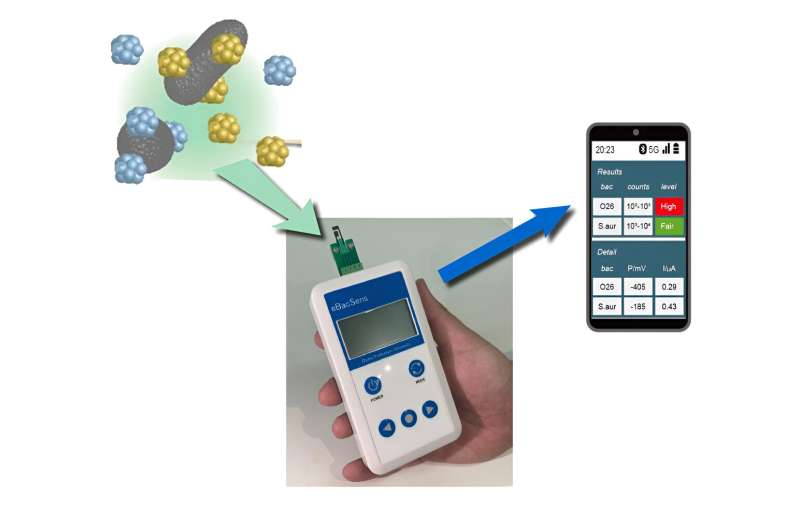This article has been reviewed according to Science X's editorial process and policies. Editors have highlighted the following attributes while ensuring the content's credibility:
fact-checked
peer-reviewed publication
trusted source
proofread
Rapid, simultaneous detection of multiple bacteria achieved with handheld sensor

Hear the words E. coli or salmonella and food poisoning comes to mind. Rapid detection of such bacteria is crucial in preventing outbreaks of foodborne illness. While the usual practice is to take food samples to a laboratory to see the type and quantity of bacteria that forms in a petri dish over a span of days, an Osaka Metropolitan University research team has created a handheld device for quick on-site detection.
Led by Professor Hiroshi Shiigi of the Graduate School of Engineering, the team experimented with a biosensor that can simultaneously detect multiple disease-causing bacterial species within an hour. The findings were published in Analytical Chemistry.
"The palm-sized device for detection can be linked to a smartphone app to easily check bacterial contamination levels," Professor Shiigi explained.
His team synthesized organic metallic nanohybrids of gold and copper that do not interfere with each other, so that electrochemical signals can be distinguished on the same screen-printed electrode chip of the biosensor. These organic−inorganic hybrids are made up of conductive polymers and metal nanoparticles. The antibody for the specific target bacteria was then introduced into these nanohybrids to serve as electrochemical labels.
Results confirmed that the synthesized nanohybrids functioned as efficient electrochemical labels, enabling the simultaneous detection and quantification of multiple bacteria in less than an hour.
"This technique enables rapid determination of the presence or absence of harmful bacteria prior to shipment of food and pharmaceutical products, thereby helping to quickly ensure safety at the manufacturing site," Professor Shiigi said.
The team aims to develop new organic metallic nanohybrids to simultaneously detect even more bacterial species.
More information: Satohiro Itagaki et al, Simultaneous Electrochemical Detection of Multiple Bacterial Species Using Metal–Organic Nanohybrids, Analytical Chemistry (2024). DOI: 10.1021/acs.analchem.3c04587
Journal information: Analytical Chemistry
Provided by Osaka Metropolitan University





















